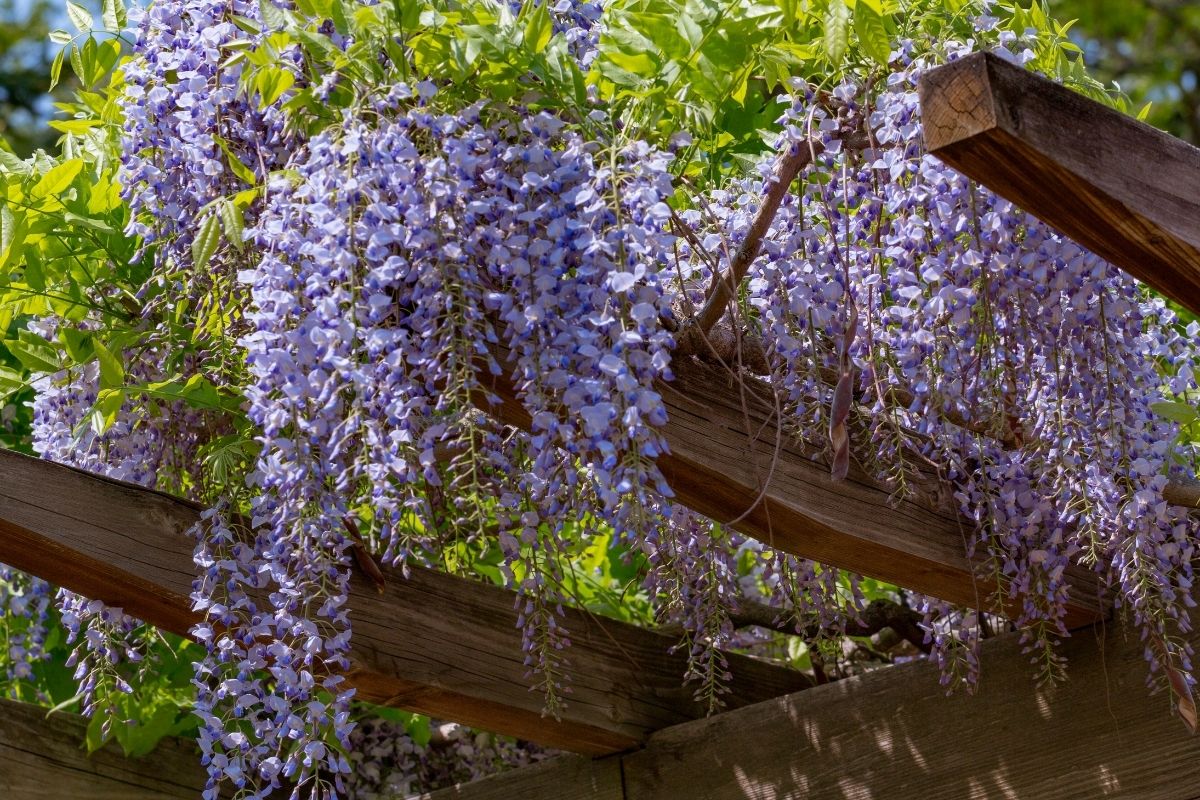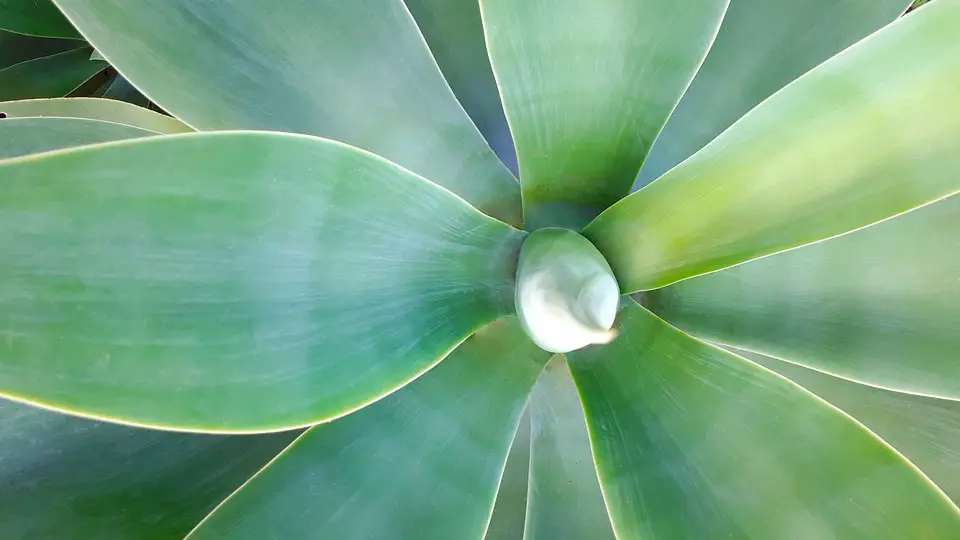Wisteria trees are one of the most beautiful flowering plants in the world. They come with a variety of colors and sizes, so you can find one to suit any landscape.
But when do these exotic beauties bloom? What’s the life cycle of this plant?
And what makes it different from other vines?
Let’s take a look at how long does it take for a wisteria tree to grow before we get into some more details about this unique species of vine.
The time it takes for wisteria to grow depends on when you buy the plant. If grown from seed, expect a wait of up to 20 years before flowers emerge. However, with other species, flowering may be as soon within three or four years after planting.
Where to get wisteria trees from
If you want to plant a wisteria tree, then you should buy one from a nursery that sells the plants.
You can find some online, and these are often more affordable than buying them at your local garden center.
If you want to save time shopping around for wisteria plants then we’ve found some good wisterias on Amazon which you can see here.
Can wisteria be grown from seeds?
Yes, you can grow wisteria from seeds and this is a lot cheaper than buying plants, however, it will take much longer for the seeds to grow into mature plants.
Wisteria seeds are not typically available at garden centers but you can find them online.
[amazon box=”B097Y78N21″ template=”horizontal”]
What types of wisteria are available?
There are two main species of Wisteria: Chinese Wisteria (Wisteria sinensis) and Japanese Wisteria (Wisteria floribunda).
Both reach maturity in about 20 years after planting, although there are different varieties within those categories that grow at different rates.
The Chinese Wisteria is the most common type and it grows to be 20-30 feet high. It’s quite beautiful with large, white blooms that create a fragrant scent.
The Japanese wisteria is smaller than its Chinese counterpart but just as fragrant.
The flowers are larger and more colorful than the ones produced by the Chinese variety and they often bloom twice during the year.
When do wisterias bloom?
Although this will vary depending on whether you have planted seedlings or bought potted plants, in general, you can expect a flowering period from mid-April all of the way through August.
Wisteria produces beautiful, white or lilac blooms that can grow up to two feet across.
These fragrant flowers are extremely popular with bees and they draw them in from great distances.
What is the life cycle of a wisteria plant?
If you want to prune your wisteria correctly then you must learn about its annual growth cycle because this will help you understand how it develops and when it’s best to cut back on the vine.
The first year of growth brings forth new shoots and leaves as well as many flower buds.
These buds usually do not emerge until spring, however, so don’t be surprised if yours don’t produce flowers right away after planting.
After the first season of growth, prune back the vine to about five feet tall.
You want to do this in order to encourage lateral branching and a thicker trunk.
Over the next summer, tend to your wisteria by watering it regularly and fertilizing it once or twice every month with a fruit tree fertilizer.
This will help give you an abundant crop of flowers that year too.
Once September comes around the blooms should be fully developed and ready to cut for home use or for long term storage (a great way to preserve them).
How can I care for my wisteria?
When caring for your Wisteria plant there are two main things you need to focus on: light exposure and water drainage.
Wisteria plants grow best in areas with full sunlight.
If you have them growing in an area that doesn’t get full sun throughout the day, then consider transplanting them to another location that does.
Just make sure there is plenty of airflow since wisteria tend to be susceptible to mold and mildew during humid conditions.
Drainage is also important for keeping your plant healthy.
Wisteria do not perform well when their roots are sitting in water so it’s essential that the soil where they are planted drains extremely well.
What does a wisteria vine look like? What is its size?
Wisterias reach maturity at between 10 and 20 feet tall with a similar spread depending on climatic conditions.
The vine itself has smooth purple bark and a thick woody trunk.
It produces dark green leaves that are glossy on the top and pale on the underside, giving it an interesting look.
The plant is characterized by its vigorous vine growth that will easily cover a chain-link fence or trellis in no time at all.
How long does a wisteria vine grow?
For both Chinese and Japanese Wisteria varieties, expect a flowering period within 10 years of germination, so around the fourth year after planting.
After this point, growth will slow down as the main stem develops thick branches with beautiful flowers that emerge on warm days during spring.
During cold weather they retreat into buds until conditions are better suited for them to bloom.
The flowers themselves are stunning lavender or light pink or white and they appear in clusters of 10-20 blooms.
Can wisteria survive winter?
Wisteria plants do well in cold areas as long as they are protected and given the chance to grow.
In climates where winters are very harsh, it’s important that the plant is covered for protection from freezing temperatures.
If you can get your hands on a blanket or sheet of some sort then drape it over your wisteria vine during winter months.
The protective covering will help keep ice from forming and potentially damaging delicate leaves and tender stems.
Does wisteria come back every year?
With proper care and maintenance, Wisteria plants will come back every year.
Can I grow wisteria in containers?
Yes! Wisterias make excellent container plants because they attract butterflies and bees while improving air quality for all those living spaces indoors.
Wisteria has three main requirements: soil that drains well, sunlight for at least six hours per day, and enough space for healthy growth.
These criteria are simple to meet in a pot, making it an excellent choice for any household.
Treat your Wisteria plant as you would any other flower or potted plant. Keep the soil moist but not wet and fertilize two or three times a year with a balanced fertilizer.
FAQs
How long does it take for a wisteria tree to start flowering?
Wisteria trees typically take around 3 to 5 years to reach maturity and start flowering.
However, the exact time may vary depending on various factors such as the tree’s age when planted, growing conditions, and the specific wisteria species.
How quickly does a wisteria tree grow each year?
Once established, a wisteria tree can grow at a rate of approximately 1 to 2 feet per year.
However, this growth rate may vary depending on factors such as the tree’s health, the availability of sunlight, soil conditions, and proper care and maintenance.
When can I expect my wisteria tree to reach its full size?
The time it takes for a wisteria tree to reach its full size can vary significantly.
In general, it can take anywhere from 10 to 20 years for a wisteria tree to fully mature and reach its maximum height and spread.
However, this timeline can be influenced by factors such as the tree’s species, growing conditions, and pruning practices.
What can I do to encourage faster growth of my wisteria tree?
To promote faster growth of a wisteria tree, you can ensure it receives adequate sunlight (at least 6 hours of direct sunlight per day), provide regular watering during dry periods, and ensure it is planted in well-draining soil.
Proper pruning, done in late winter or early spring, can also help stimulate growth and encourage the development of new flowering wood.
Are there any techniques to speed up the flowering of my wisteria tree?
While the flowering time of a wisteria tree is primarily determined by its age and species, there are some techniques that can potentially encourage earlier blooms.
These include proper pruning to maintain a balance between vegetative growth and flower production, avoiding excessive fertilization (as high nitrogen levels can promote leaf growth at the expense of flowers), and ensuring the tree is not subjected to stress or excessive shade, which can hinder flowering.
However, it’s important to note that these techniques may not guarantee immediate or dramatic results and individual tree variations should be considered.
Final Words
Wisteria are adored for their unique appearance and fragrant flowers.
If you have a large yard or garden then it’s easy to grow your own beautiful wisteria right at home.
They require little care once established – just a bit of pruning, watering, and feeding.
Make sure that there is enough room for the plant to spread out its limbs over time so that they can reach their full potential, growing into an oasis of blooms in your backyard or by a patio.




